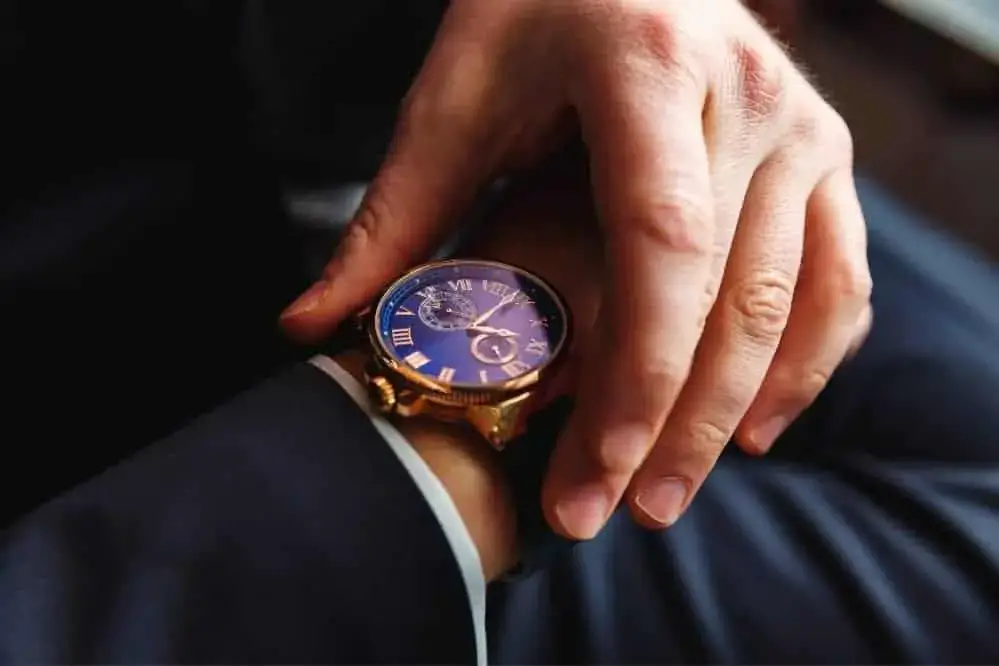Shopping for watches can be fun and exciting, but also a bit frustrating if you aren’t quite sure of your watch size. In fact, not knowing can make finding the right watch for you rather difficult. Luckily, there are several ways for you to find out your watch size so that you can shop successfully and find the watch you’ve been looking for.
How to Determine the Right Size for Your Wrist?
Believe it or not, there’s a lot more to finding the right size watch for your wrist than you might imagine. There are a few things to take into consideration when trying to determine the right size watch for you. These include watch case diameter, watch face details, complications and components, watch case thickness, wrist size, and watch band design, materials, and thickness,
First, you want to start off by measuring the size of your wrist. Typically, sizes are considered either small, average, or large. A small wrist measures about 6 inches, while a wrist that is considered average measures 7 to 7.5 inches. A large wrist measures 8 inches and larger.
Once you’ve figured out which size category you fall into, you can start to take other things into consideration, such as the watch case diameter. When it comes to watch case sizing, the option is left to the wearer. However, there are some guidelines available that you can follow to make finding the right watch for you that much easier. Ultimately, you want your watch to look proportional on your wrist.
With a small wrist especially, you’ll want to match the proportion of your watch case as well as the type of band you wear for it to all come together nicely.
The watch face details, complications, and components are something else to consider. It might sound silly, but something as minuscule as the design and shape of the numbers inside of the watch face can make a huge difference. If you want to play it safe, go with the classic white background and black numbers. This combination is always going to look good and may even make you look slimmer. Keep in mind that watches that are bright and flashy will surely play a part in the visual size of your watch.
The watch case thickness is up next on your list of things to consider before buying a watch. In terms of thickness, 6 to 8 mm is considered thin, 8 to 12 mm is average, and 14 to 18 mm is thick.
Your watch band style is truly the finishing touch on your watch. Again, the trick here is to make sure everything looks as proportional as possible. A band that is wide can make a smaller watch face look disproportionate and vice versa. With the right proportions between the band width and face, your watch will look much cleaner and more put together.
The material of your watch band is more important than you might imagine. For the most part, your options are leather, metal, fabric, silicone, or rubber. As strange as it may sound, a leather band will make your wristband look much slimmer than it actually is. This is because of the fact that it tends to hug the wrist more than other materials.
Metal watch bands on the other hand, tend to be heavy and will therefore fit a bit more loosely on the wrist. If you have a large watch case, a metal watch band may be a good option. Another option is fabric watch bands, which are well-liked because of how versatile they can be. However, they do tend to come in bold colors which again, can change the overall look of your watch.
With silicone or rubber watch bands, it’s best not to try and pair them with luxury faces. These watch bands are slim and perfect for working out or swimming in. Again, these are also versatile and come in a variety of colors.
How to Measure Watch Size?
To measure a watch size, all you need to do is place watch calipers from one side of the case to the other, either just above or below the crown. To make things easier on yourself, measure from the 4 o’clock to 10 o’clock position or from the 2 o’clock to 8 o’clock position.
For the most part, watch cases are measured in millimeters, so it’s easier to use digital watch calipers to measure. If you don’t have any, however, you can also just use a regular transparent ruler. If using a ruler, be sure that you line it up to the edge of the watch as best as you can. When reading the size, be sure to do so from above the edge of the case and not at an angle. Be careful when using the ruler as you can easily scratch the crystal.
If this all sounds a bit difficult, the good news is that most manufacturers and online watch sellers will already give you this information so that you don’t have to find it yourself. However, there are times when this information could be wrong, so be sure to check multiple websites to compare.
Other Factors That Affect Watch Size
Interestingly enough, the hour marker circle can change how big a watch looks. To measure one, do so from one tip of an hour marker on the dial to the tip of the opposite hour. Unfortunately, it’s not always easy to measure the hour market since it’s inside of the case.
The bezel can also affect how big or small a watch may look. In fact, a watch with a bezel may look much smaller than it actually is. This is simply because the bigger the bezel, the smaller the dial tends to be.
Conclusion
If you’re ready to invest in a luxury watch or are simply curious, finding out your watch size is always a good option and a great way to make shopping for watches that much easier.
